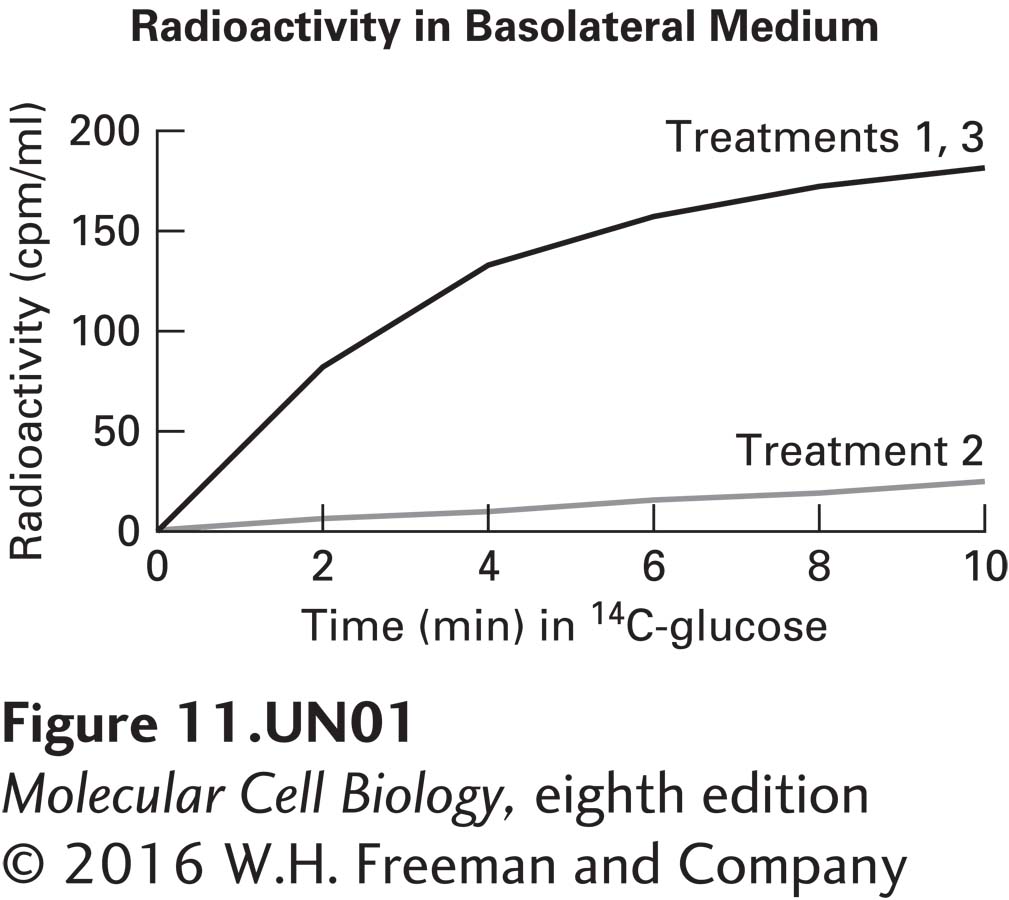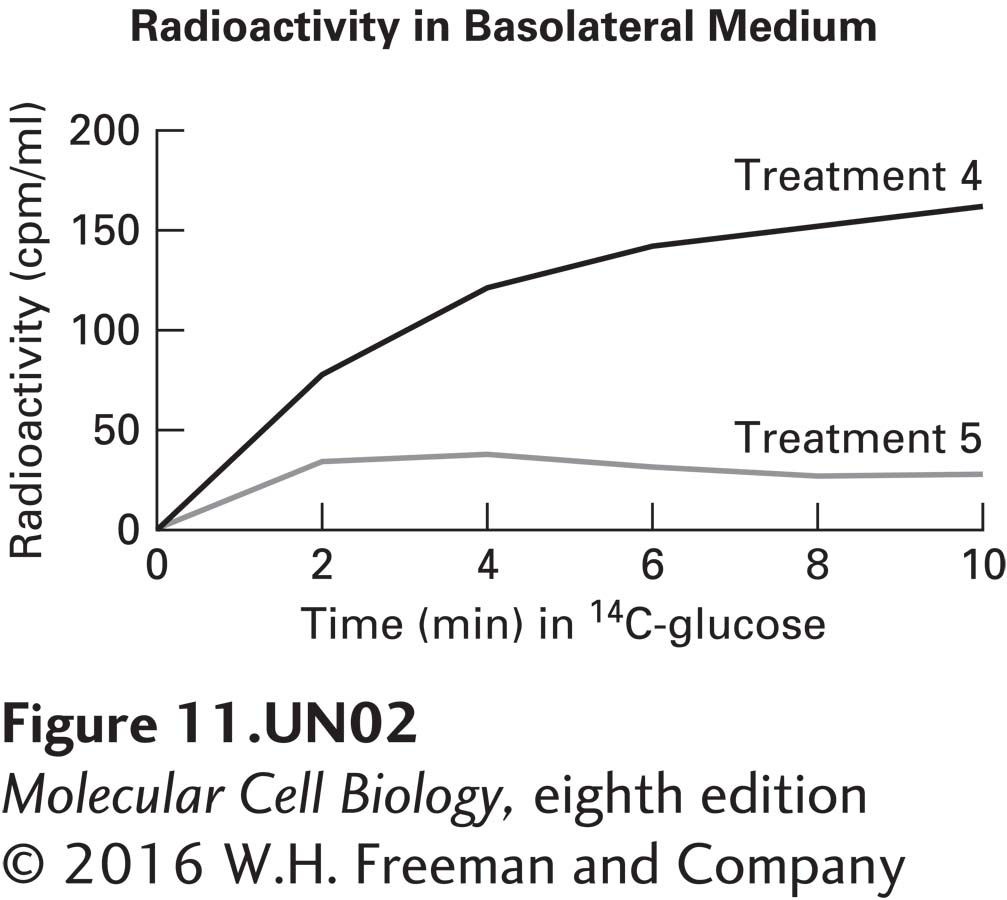
Chapter 11. Transepithelial Glucose Transport
Introduction

Analyze the Data 11-1: Transepithelial Glucose Transport
Imagine that you are investigating the transepithelial transport of glucose. Intestinal epithelial cells are grown in culture to form a complete sheet so that the fluid bathing the apical region of the cells (the apical medium) is completely separated from the fluid bathing the basolateral region of the cells (the basolateral medium). Radioactive (14C-labeled) glucose is added to the apical medium, and the appearance of radioactivity in the basolateral medium is monitored in terms of counts per minute per milliliter (cpm/ml), a measure of radioactivity per unit volume.
Treatment 1: The apical and basolateral media each contain 150 mM Na+ (curve 1).
Treatment 2: The apical medium contains 1 mM Na+, and the basolateral medium contains 150 mM Na+ (curve 2).
Treatment 3: The apical medium contains 150 mM Na+, and the basolateral medium contains 1 mM Na+ (curve 3).

a. What is a likely explanation for the different results obtained in treatments 1 and 3 versus treatment 2?
Transepithelial transport of glucose requires the cotransport of Na+ down its concentration gradient to drive glucose against its concentration gradient from the apical medium into the cells. This coupling cannot occur when the concentration of Na+ in the apical medium is low, as is the case for curve 2. Under these conditions, there would be no inward gradient of Na+ across the apical membrane to drive glucose uptake. Subsequently, for the glucose to move from the cells into the basolateral medium, the glucose is transported down its concentration gradient and thus does not depend on Na+ and its concentration in the basolateral medium. Accordingly, the concentration of Na+ in the basolateral medium is not a factor.
In additional studies, the drug ouabain, which inhibits Na+/K+ ATPases, is included as noted.
Treatment 4: The apical and basolateral media contain 150 mM Na+ and the apical medium contains ouabain (curve 4).
Treatment 5: The apical and basolateral media contain 150 mM Na+ and the basolateral medium contains ouabain (curve 5).

b. What is a likely explanation for the different results obtained in treatment 4 versus treatment 5?
c. Certain natural compounds and drugs being tested as treatments for diabetes lower glucose transport in intestinal or kidney epithelial cells, and thereby lower blood sugar levels. Addition of one such drug to the apical medium yields transport similar to that in Treatment 5, whereas its addition to the basolateral medium yields transport similar to that in Treatment 4. What is the most likely target of this drug, and what is its effect on this target?
Activity results are being submitted...